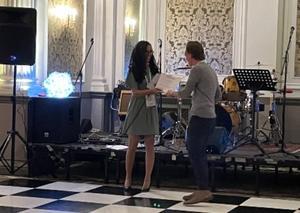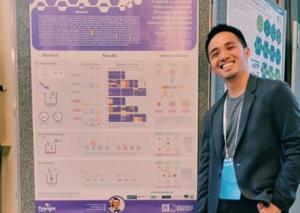Europic 2022: Journal of General Virology Best Poster Prize
Posted on August 18, 2022 by Microbiology Society
At Europic 2022, a Microbiology Society virology conference focussing on picornaviruses, the Journal of General Virology's 'Best Poster' Prizes were awarded. In this blog we meet the winners to find out more about them and their research.
Jelle Schipper: 'Real-time visualization of viral RNA during enterovirus infection'
Who or what inspired you to be a scientist?

As a kid I was already a little bit of a researcher. I was fascinated by technology and always wanted to know how everything worked. I never really lost this curiosity and science offers me the chance to do my hobby as work!
What are you currently working on and what area of your research excites you the most?
I am currently working on developing different single molecule live-cell imaging techniques to dissect the early translation and replication dynamics of picornaviruses (and in the future coronaviruses). We want to use these techniques to try and gain mechanistic insights, which might eventually form the basis for the development of novel antiviral therapeutics. I am currently really excited that my work may contribute to visualizing viral RNA molecules and proteins and their interactions in living cells in real time, that would be fantastic!
How would you explain your poster to a child under 10?
Viruses are intruders of our cells. When they enter, they take over all the normal functions of the cell. What we are trying to do is to show through a microscope how a virus does this over time. This way we can understand them better and search for ways how we can stop them!
What would you be doing in your career if you weren’t a scientist?
If I weren’t a scientist I would have liked to become a carpenter or work in construction. I really love making things from wood in my spare-time and think I would also enjoy doing that as a full-time job!
Giann Dellosa: 'Towards a universal rhinovirus vaccine: characterising the antibody responses induced by conserved capsid epitopes'
Who or what inspired you to be a scientist?

I was profoundly inspired by the biographies of Dr Richard Feynman, a Nobel prize-winning theoretical physicist. His approach to discovery, his ability to learn from the ground up, and his emphasis on not fooling himself has been a constant inspiration.
What are you currently working on and what area of your research excites you the most?
I am working on a rhinovirus vaccine targeting the VP4, an internal protein of the virus. While the vaccine in itself is interesting, I am most excited about the fundamental aspects of VP4. It is a very challenging protein to work with which makes every little progress more fulfilling.
How would you explain your poster to a child under 10?
The cold virus uses its arm to poke holes to enter your body. We made three vaccines based only on the fingers, the hand, or the entire arm of the virus. We found out that the finger vaccine worked best which may one day help protect us from getting colds.
What would you be doing in your career if you weren’t a scientist?
I love teaching. Before becoming a scientist, I was both a choreographer and a university lecturer in the Philippines for ten and four years, respectively. I would most likely have kept teaching dance and biology.

